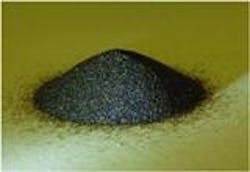Team prints "world's first" 3D titanium car components
Cambridge, England - Stephan Harris reports in The Engineer that UK researchers claim to have produced the world's first 3D-printed titanium car parts, demonstrating how the metal could become cheap enough for commercial production.
Titanium is usually considered too expensive for use in automotive manufacturing but a novel process for producing titanium powder from sand has opened the way for 3D printing parts cheaply enough for low-to-medium volume production, according to engineers from Sheffield University.
The process, created by Rotherham-based company Metalysis (originally a spin-out of Cambridge University), creates titanium powder at much lower cost than the conventional method of atomizing blocks of metal, said Prof Iain Todd, director of the university's Mercury Centre in the department of materials.
This means automotive parts can be made more economically using additive manufacturing rather than traditional subtractive techniques that waste large amounts of the expensive metal and use costly die set tools, he told The Engineer.
"If you wanted to make anything out of titanium, you normally wouldn't bother because it's not a commodity metal. But also the process is getting a lot quicker. It's certainly a lot better for moderate runs - it used to be very low-volume production runs."
Todd's team has used the material to 3D print parts including impellers and turbochargers, as well as aerofoils using a Renishaw laser additive manufacturing machine and standard operating procedures based on the material's thermal characteristics.
"It processes beautifully," he said. "It's probably one of the easiest materials we've ever put on."
The research doesn't take titanium automotive printing to the point where the material or the technique could be commonly used for mass production. But Todd is confident things are moving towards that.
"Each time we change something we move closer to the point where titanium could be considered like something as stainless steel," he said.
"That's still a high-value steel, but you're looking that costs [are] the same, is about half the density and has temperature capabilities that are quite attractive. I think you're looking at an interesting competitor to standard automotive material."
The researchers now plan to work with Metalysis to create other materials from the titanium powder, particularly alloys that would normally separate when formed from conventional titanium.
Read more in The Engineer
